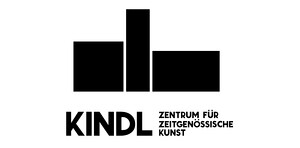Today’s Avant-Garde as Tomorrow’s Salon Art?
April 2–August 6, 2017
Am Sudhaus 3
12053 Berlin
Germany
Hours: Wednesday 12–8pm,
Thursday–Sunday 12–6pm
T +49 30 832159120
info@kindl-berlin.de
Lena Braun, Jennifer Danos, Grace Jones / Nick Hooker, Christine Sun Kim, Akane Kimbara, Wolfgang Müller, Magnús Pálsson, Andy Warhol / Susan Sontag, Ming Wong / The Island of Lost Souls
Art likes to present itself as counterculture. This makes popularity in art often seem suspicious: in a way, art should be anti-mainstream, avant-garde. “Yet today’s avant-garde often ends up as the salon art of the future,” says the artist Wolfgang Müller. Many things are overestimated, while other things are overlooked or ignored. That which does not receive general attention and recognition is designated as subculture or underground.
Up and Down presents artists whose work plays with the boundaries of subculture, high culture, and mainstream. They question the mechanisms on which these attributions are based and explore how they are negotiated. When is something considered high culture? And when is it considered subculture? Is subculture more authentic than kitsch, glamor, and pop? The exhibition will show artworks that set such categorisations in motion by straddling the underground and the mainstream. Where are the boundaries between under- and overground? Where do they change?
Does time have something to do with it? Ming Wong’s starting point is the German film director Rainer Werner Fassbinder, whose films were considered provincial in a talkshow on German TV in the 1970s, but are now considered high culture. To celebrate his tenth anniversary in Berlin, along with the students from his performance class at the Universität der Künste Berlin, Wong created a remake of his 2007 work Learning German with Petra von Kant. By contrast, in 2017 Wolfgang Müller materialised onto vinyl the hyperinterpretation of Marcel Duchamp’s The Large Glass by Bruno Hoffmann at the Frontkino in 1984. Müller had invited the Duchamp specialist to the West Berlin counterculture bar after Hoffmann’s never-ending alchemic discourse had been interrupted by annoyed students at the university. At the Frontkino, around thirty punks listened to the discourse, which went on for several hours, and even applauded at the end.
Andy Warhol knew very well how to sell counterculture to the mainstream: “Have a well-choreographed, well-scored, anti-Establishment ‘hippie-be-in’ in a well-ventilated, well-located theater.” Warhol wanted to be “in,” and so did the inside-out California roll, invented in 1971 with the seaweed hidden on the inside and replaced on the outside with orange fish roe. Lena Braun, known for her queer happenings in Berlin, created the environment California Roll Inside Out for Up and Down. “What isn’t perceived,” states the artist, “also can’t be applauded.” Meanwhile, in the series Maths, Magnús Pálsson, the founder of interdisciplinary art in Iceland, suggests that the size ratio of things—bigger or smaller—depends on your perspective.
In Up and Down Grace Jones is presented with Corporate Cannibal, a music video directed by Nick Hooker in 2008. In the video Grace Jones’s body turns into a digital virus, a cannibal, a Wall street banker. The corporate cannibal moves in the labyrinth made in situ by Jennifer Danos and is accompanied by a video work by Akane Kimbara that functions as a kind of metronome. She/he/it says: “Pleased to meet you, pleased to have you on my plate.” Sound is also the material of Christine Sun Kim, who considers it to be a social currency, one that for a long time seemed inaccessible to her. “Who owns sound?” she asks while probing its etiquette.
The exhibition is curated by An Paenhuysen (guest curator).
Press contact: Denhart v. Harling, dh [at] segeband.de / T +49 179 4963497

